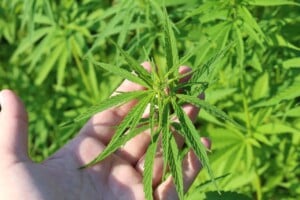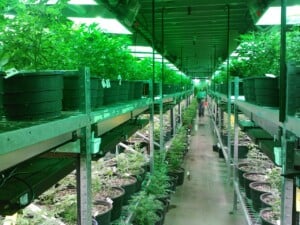On 23 February 2019, Peru’s government published in the official local newspaper, El Peruano, the regulation of Law N° 30681 that legalized the medicinal and therapeutic use of cannabis and its derivatives.
In this way, Peru is at the forefront in the legalization of cannabis in Latin America, mainly for medicinal use; which was led by Uruguay. It is set to become a major player in the region’s cannabis market.
The opening to this new market in Peru has great economic potential. Each hectare of cannabis crops generates sales of USD$1 million, while the investment for each hectare is US$120,000. Furthermore, it is estimated 250,000 formal jobs will be created in direct and indirect work.
In addition, this would generate a great deal of revenue through tax collection, contributing approximately USD$500 million annually in taxes.
Table of Contents
Peru’s new cannabis law

This regulation includes the cultivation and manufacture of psychoactive cannabis (containing 1% or more of tetrahydrocannabinol, or THC) and non-psychoactive cannabis (cannabidiol, or CBD). The decree specifically identifies that non-psychoactive cannabis and its derivatives are not controlled substances. This means individuals and businesses won’t require licenses in order to research, produce, import or commercialize non-psychoactive cannabis.
The Ministry of Internal Affairs (MININTER – Ministerio del Interior) requests that non-psychoactive cannabis be incorporated into the same control and traceability guidelines as psychoactive cannabis. The argument for this is that THC would be better-regulated. Peru is still expecting a consensus on this among all the public entities involved.
Law N° 30681 covers guidelines and procedures for research, farming and production limits, as well as importation and commercialization of cannabis.
Getting a cannabis license
With this new framework, the Peruvian government established three licenses for entities to obtain in order to produce cannabis:
- Scientific research license: this license enables universities to undertake agricultural, health, and other scientific research. The entity in charge is the National Institute of Agricultural Innovation – INIA which is part of the Ministry of Agriculture and Irrigation.
- Wholesale import and commercialization: this is available to registered pharmaceutical companies. The entity in charge is the Dirección General de Medicamentos, Insumos y Drogas – DIGEMID, line organ of the Ministry of Health.
Note: Further compliance standards under Good Manufacturing Practices or Good Distribution Practices may be applied. Sales are only for registered patients and delivery or online sales are not allowed.
- Production license: this is exclusively given to public institutions and registered and certified pharmaceutical laboratories. The entity in charge is DIGEMID.
Several government agencies of the Ministry of Health and the Ministry of Agriculture are in charge of implementing the new legal framework and issuing these licenses.
Further developments
Although the law and its regulation have been put in place, businesses are still waiting to get the whole implementation process approved by the relevant government authorities as other Latin American countries are doing to become a leading supplier of the world’s cannabis market.
Unfortunately, there isn’t yet a definitive wait time for processing licenses because the entities involved are still agreeing and each one depends on the other.
Ideal conditions for production

Peru offers prime conditions for growing cannabis. The country’s diverse climate offers more favourable natural conditions in various regions, compared to those in the Northern Hemisphere.
Peru has a comparative advantage to become an important producer of medical cannabis due to its great diversity of altitudinal zones and weather conditions. Peru doesn’t have as strong a winter as the Northern Hemisphere in relation to the production activity in Canada and United States, which starts in April and harvest in September.
Some areas of Peru would allow up to 5 harvests per year which would guarantee greater annual production. In addition, Peru has low-cost labor that enables businesse to start off with ideal, cost-effective conditions to compete in cannabis production.
The birth of this sector provides a noticeable opportunity to generate income while creating a responsible industry.
Local cannabis market
The regulation issued notes the following:

- Establishments registered and authorized before DIGEMID are allowed to sell cannabis and its derivatives
- People seeking access to products must register in the DIGEMID’s website
- Sales cannabis for medicinal purposes will be given only under prescription
- The prescription will be the responsibility of licensed physicians, giving a medical prescription for products that contain CBD and a special prescription for those that contain THC.
Note: The recreational use of cannabis and its derivatives are not permitted in Peru.
We know that one local and four international companies are currently moving into the cannabis market in Peru. One of them is the Canadian company Canopy Growth which had already announced its entry into the country to educate the market and, subsequently, start sales and distribution operations. Its subsidiary in Peru is named Spectrum Cannabis Perú.
Peru’s potential on the international stage
While local cannabis cultivation will help around 10,000 patients in Peru, there’s now potential for an export capability too. Heavy international demand for cannabis and derivative products from countries such as Canada and the United States offer great opportunity for Peruvian cannabis exporters, according to Tony Salas, President of the agribusiness consultancy ACM.
Like several of its Latin American counterparts, Peru is forecasted to become a great exporter of cannabis in the near future.
Contact us to get started
As Peru peels back its legislation around cannabis, entrepreneurs and businesses will be empowered to enter the market and claim a share of what promises to be a booming industry. At Biz Latin Hub, our local and expatriate team in Peru can help businesses get started.
With our range of market entry and back-office services, we can provide legal services and help investors meet all corporate requirements for setting up in Peru. Contact us now for more information and guidance for your business venture.
Learn more about our team and expert authors.
The information provided here within should not be construed as formal guidance or advice. Please consult a professional for your specific situation. Information provided is for informative purposes only and may not capture all pertinent laws, standards, and best practices. The regulatory landscape is continually evolving; information mentioned may be outdated and/or could undergo changes. The interpretations presented are not official. Some sections are based on the interpretations or views of relevant authorities, but we cannot ensure that these perspectives will be supported in all professional settings.